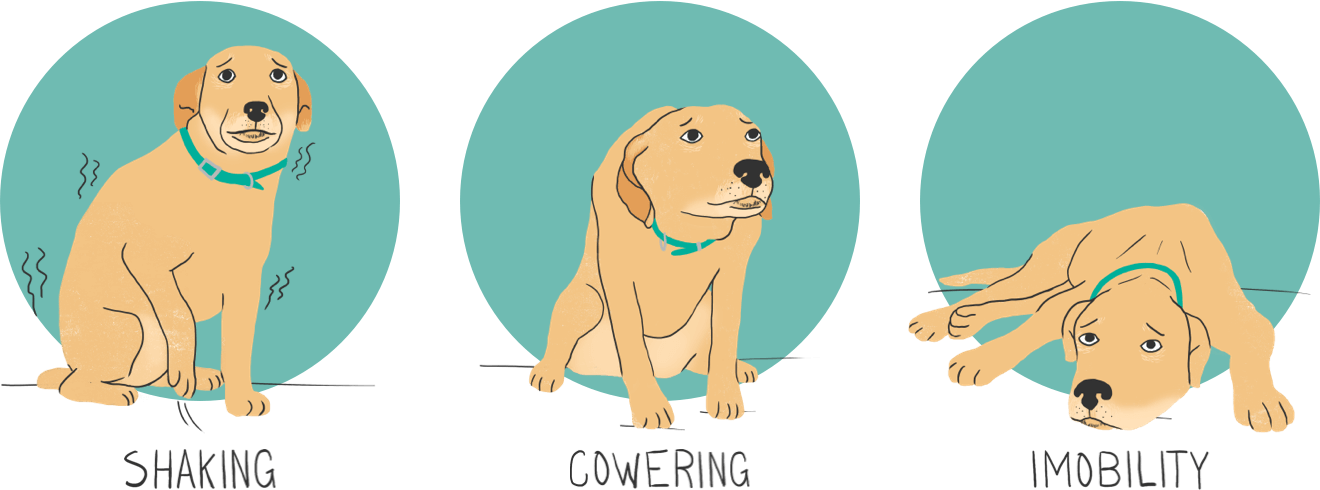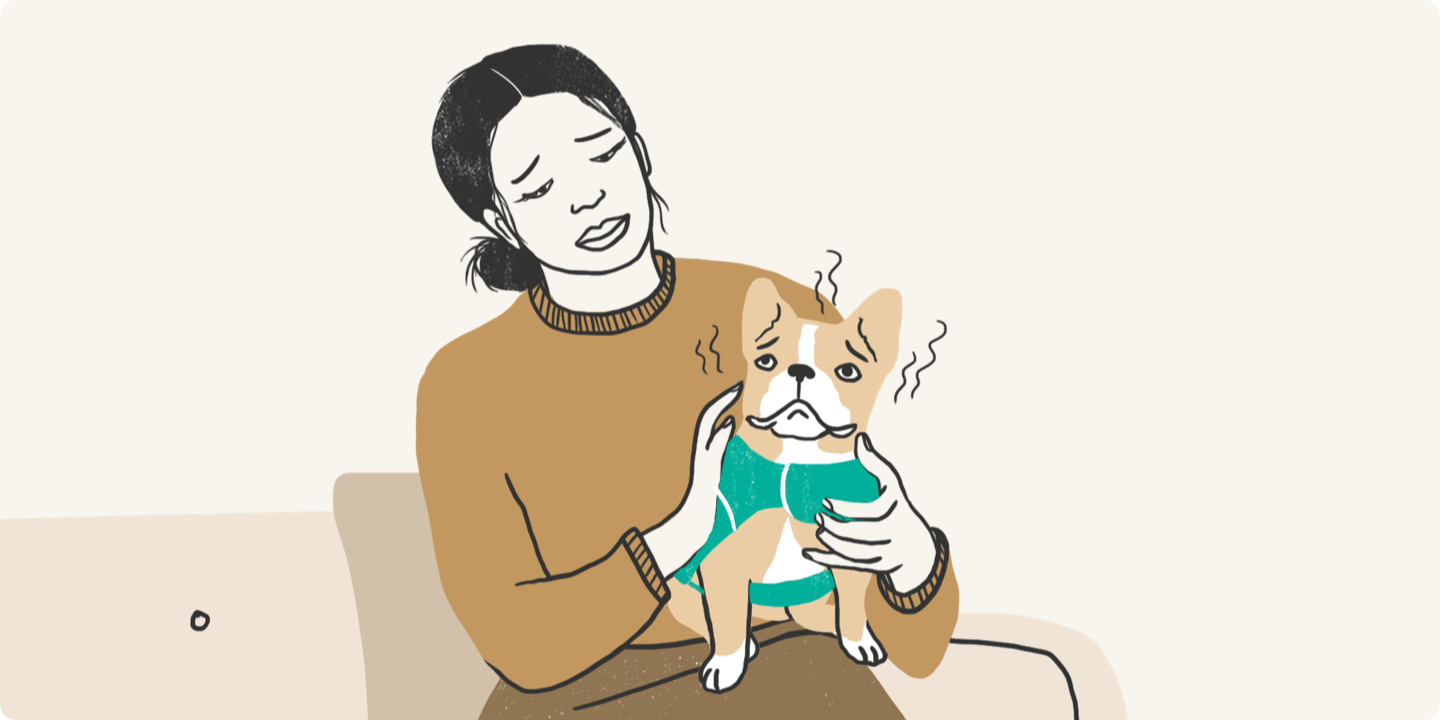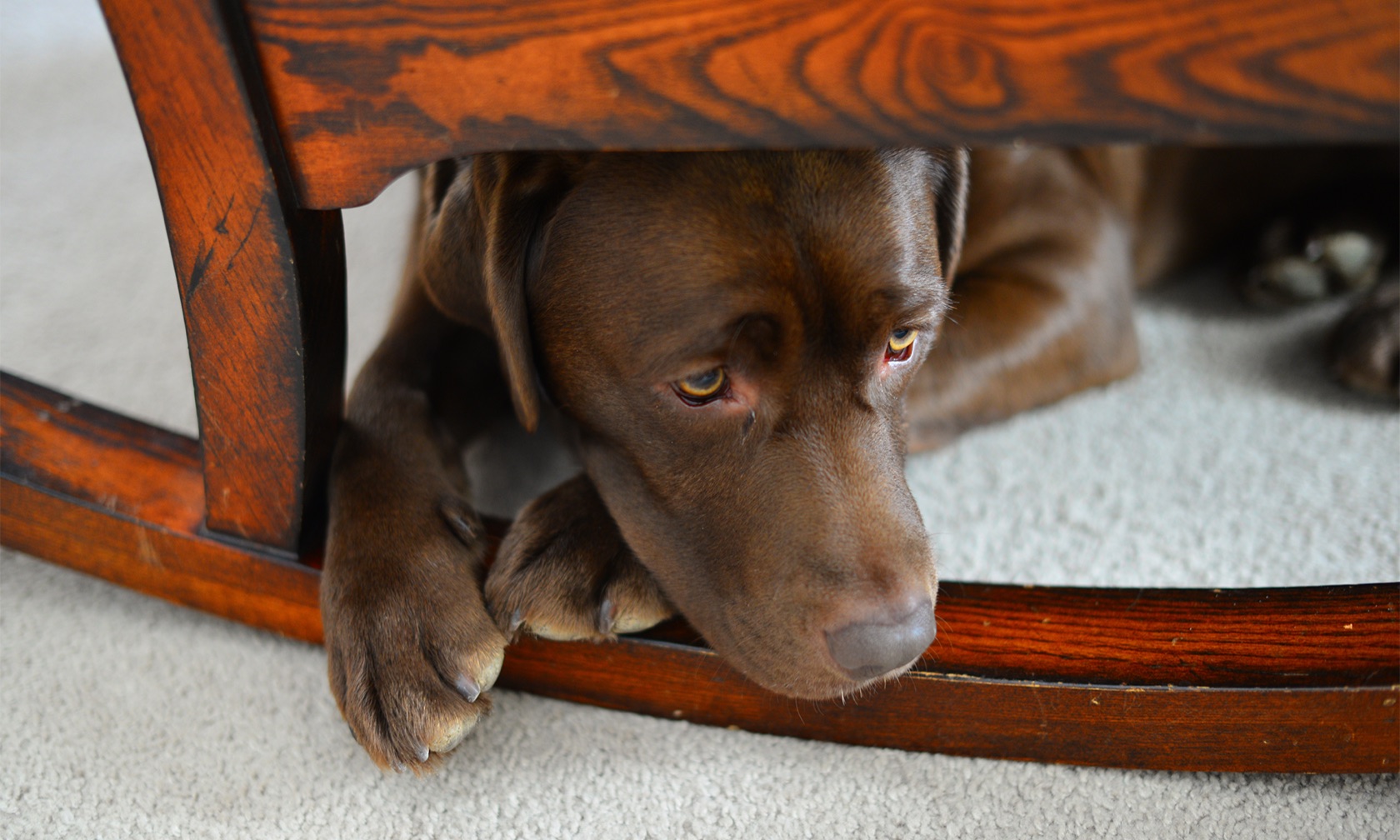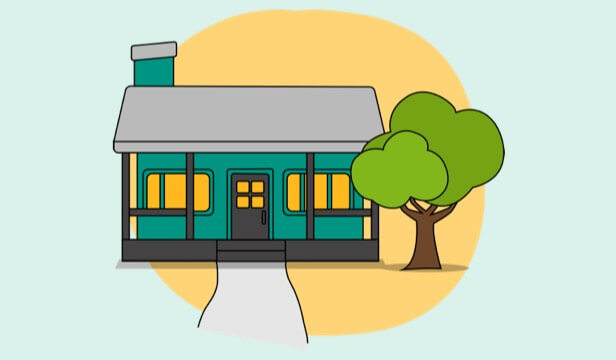Is your dog afraid of thunder? At least two-thirds of dogs suffer from noise aversion,1 a fear and anxiety condition of loud noises — such as thunder, fireworks, or traffic noise — that leads to distress, suffering, and potentially-destructive behavior.2,3 Although destructive behavior is one of the more obvious signs of noise aversion, there are several other signs (such as those listed below).

The Signs of Noise Aversion:
- Pacing or restlessness
- Lip licking
- Trembling or shaking
- Panting
- Excessive alertness or hypervigilance
- Cowering
- Hiding
- Brow furrowed or ears back
- Freezing or immobility
- Owner seeking behavior or excessive clinginess
- Refusing to eat
- Yawning
- Vocalizing (whining or barking at the sounds)
Why Is It Important to Know if Your Dog Has Noise Aversion?
Noise aversion negatively impacts your dog’s quality of life and mental health. When a dog with noise aversion hears thunder or another loud noise, the fear and anxiety that they experience is similar to what a person feels like when they’re having a panic attack.
If not addressed early, the signs can progress to destructive behaviors such as scratching on doors or walls, jumping through windows or glass doors, or digging under or jumping over yard fences. If they escape from your house, they could end up in a shelter, lost, or injured. Even if your dog does not show these more severe signs, the fear and anxiety that they feel during the noise event is distressful and causes your dog to suffer.
While you may think that your dog’s negative response to thunder is normal, noise aversion is not—it’s a medical condition that has a significant emotional impact on your dog. Delaying the diagnosis and treatment of your dog’s aversion to thunder can increase both the frequency and severity of your dog’s signs,2,3 worsen your dog’s quality of life, and result in the development of other anxieties. It also puts a strain on the bond and trust between your family and your dog.
Sadly, even though their dogs outwardly show such a negative reaction to noises like thunder or fireworks, only 40% of pet owners discuss their dog’s noise aversion with their veterinarian.2 Make sure that you discuss your dog’s reaction to thunder or other noises at your next visit. Reactions to thunder may include fear of additional stimuli such as vibrations, so it is important to discuss all possible triggers with your veterinarian. Your vet can provide behavioral and medical treatment recommendations to help your pet live more peacefully through noise aversions that are currently causing them fear and anxiety.
To see whether your dog might have a noise aversion, use this interactive noise aversion checklist. You can then print and take the results of the checklist to your veterinarian to discuss next steps.

Steps to Manage Your Dog’s Noise Aversion and Thunder Anxiety
There are a number of ways you can help manage your dog's thunder anxiety. Such methods include medication, behavior modification, and noise reduction. These methods can be used individually or combined, depending on your dog's needs.
Medication for Thunder Anxiety
Once you’ve discussed your dog’s unique noise-related signs with your veterinarian and they’ve confirmed the diagnosis, they’ll likely recommend treatment with medication that can be given to your dog before or as thunder occurs. This can help provide your dog with more immediate relief from noise aversion as you work on the other important steps discussed below.
Behavior Modification
Your vet will also recommend things you can do to help your dog from reacting as strongly to thunder, like working on behavior modification techniques such as systematic desensitization and counterconditioning. It’s often best to work with a board-certified veterinary behaviorist or a rewards-based trainer for the behavior modification (you can ask your veterinarian for a recommendation). Aids like anti-anxiety clothing may be recommended, as well.
Noise Reduction
You can also help your dog with their thunder anxiety at home by reducing your dog’s exposure to the noise, any windows, and overall creating a safe space from the noise during thunderstorms. Practice the “go to” cue with your dog before thunderstorm season, so when thunderstorms occur, your dog can head to a quieter space in your home.
Since each dog’s reaction to noise is different and treatment should be tailored to the individual, your veterinarian is best suited to determine an individualized treatment plan for each dog that has noise aversion.
To see if your dog has signs of noise aversion, use our interactive noise aversion checklist.
ZPC-00205R2
IMPORTANT SAFETY INFORMATION: Do not use Sileo in dogs with severe cardiovascular disease, respiratory, liver or kidney diseases, or in conditions of shock, severe debilitation, or stress due to extreme heat, cold or fatigue or in dogs hypersensitive to dexmedetomidine or to any of the excipients. Sileo should not be administered in the presence of preexisting hypotension, hypoxia, or bradycardia. Do not use in dogs sedated from previous dosing. Sileo has not been evaluated in dogs younger than 16 weeks of age or in dogs with dental or gingival disease that could have an effect on the absorption of Sileo. Sileo has not been evaluated for use in breeding, pregnant, or lactating dogs or for aversion behaviors to thunderstorms. Transient pale mucous membranes at the site of application may occur with Sileo use. Other uncommon adverse reactions included emesis, drowsiness or sedation. Handlers should avoid direct exposure of Sileo to their skin, eyes or mouth. Always review INSTRUCTIONS FOR USE before dispensing and dosing. See Prescribing Information.
The product information provided in this site is intended only for residents of the United States. The products discussed herein may not have marketing authorization or may have different product labeling in different countries. The animal health information contained herein is provided for educational purposes only and is not intended to replace discussions with an animal healthcare professional. All decisions regarding the care of a veterinary patient must be made with an animal healthcare professional, considering the unique characteristics of the patient.
Sileo® is trademark owned by Orion Corporation Orion Pharma Animal Health. It is manufactured by Orion Corporation and distributed by Zoetis under license from Orion Corporation Orion Pharma Animal Health.
- The Harris Poll: Custom Motion Sickness and Noise Aversion Omnibus Pet Owner Quantitative Research Report, December 2018
- Zoetis: Foster Rosenblatt Noise Aversion Research; February 5th 2016
- Shull-Selcer EA, Stagg W. Advances in the understanding and treatment of noise phobias. Vet Clin Nor Amer: Small Anim Pract. 1991;21(2):353-367.




